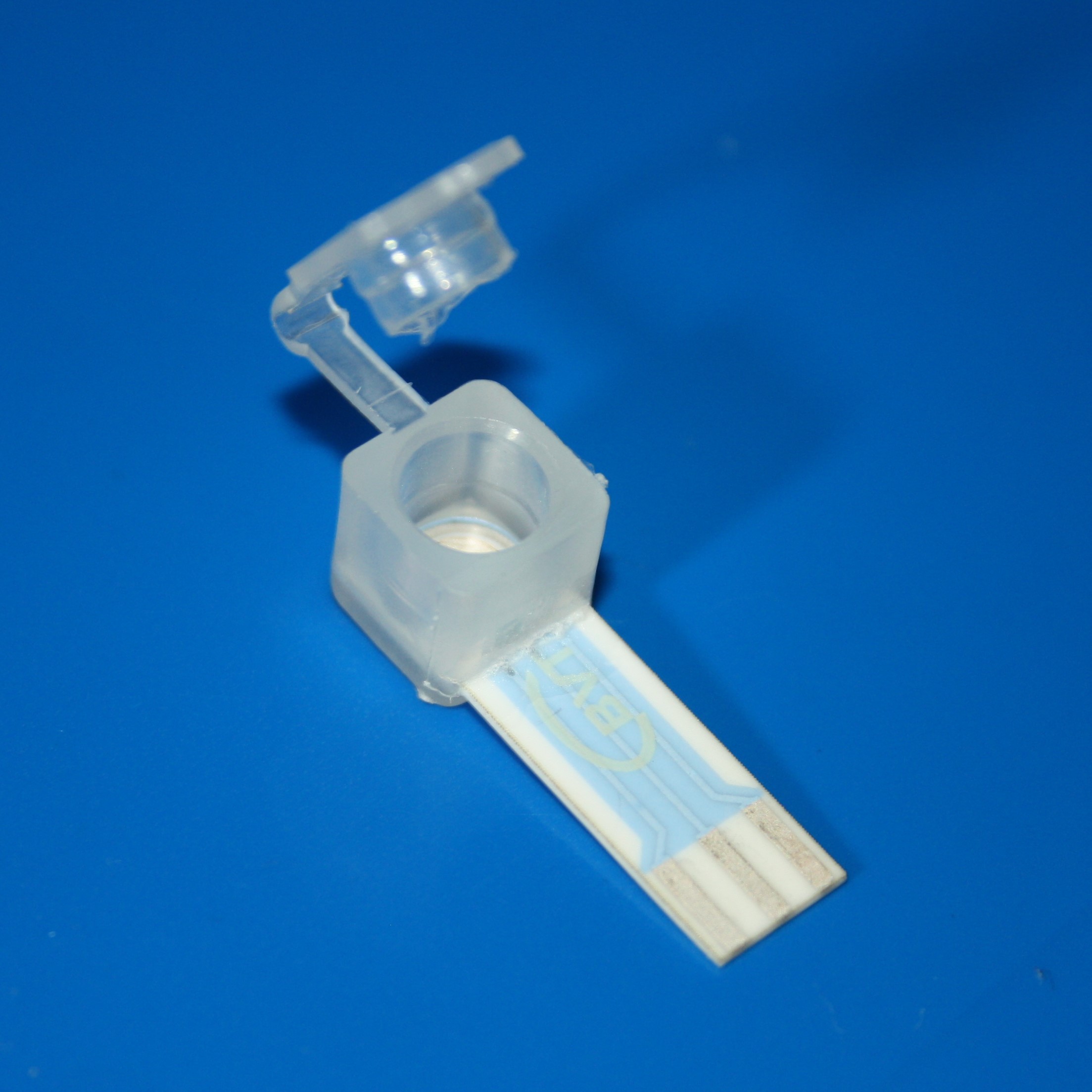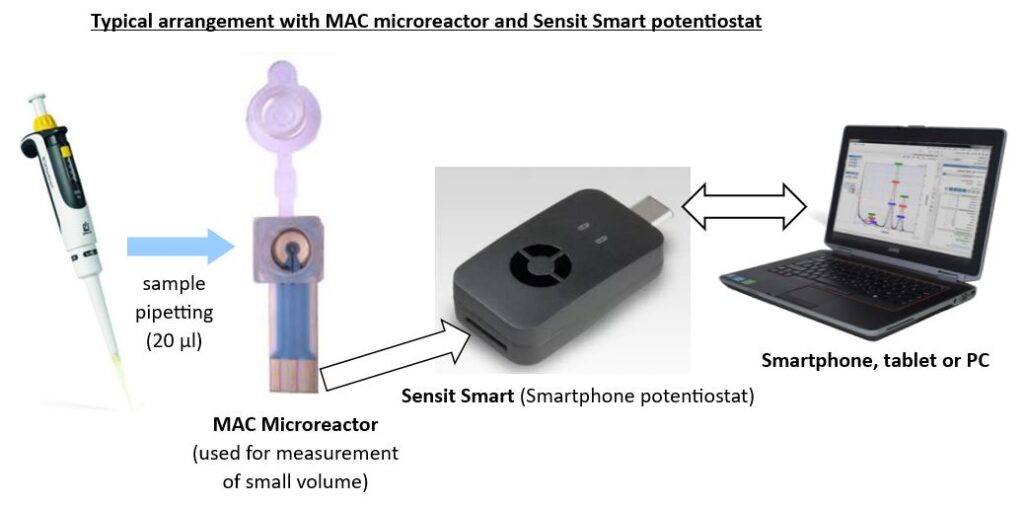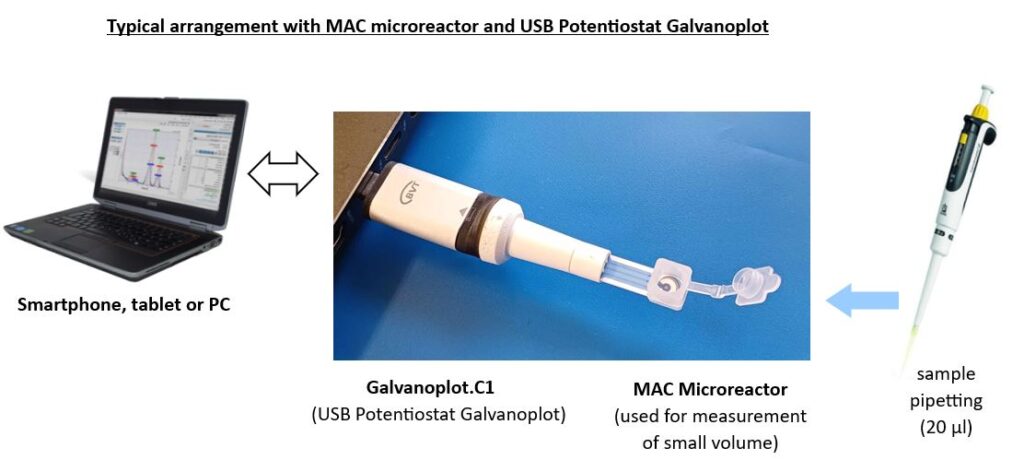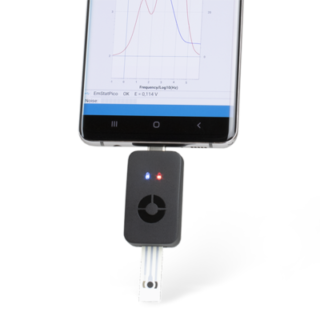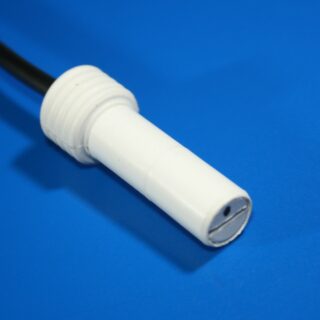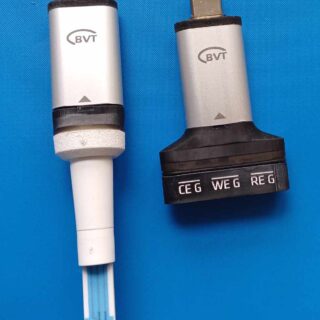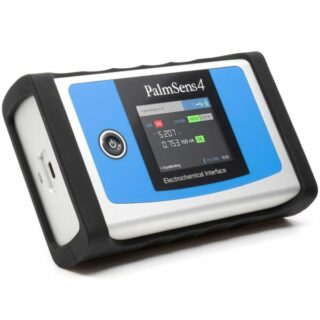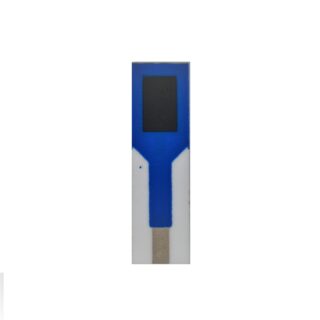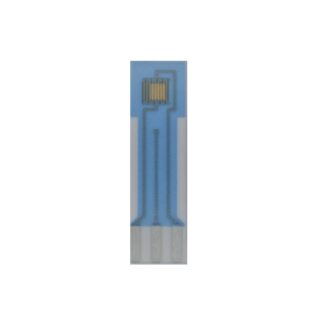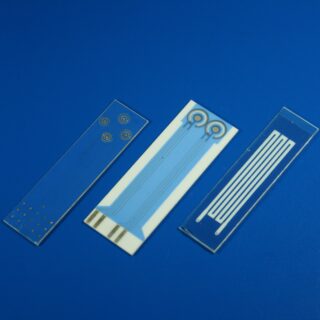Category
- Custom made glass products
- CUSTOMER SERVICES
- NEW PRODUCTS
- Sensors and electrodes
- Custom made and Modified Screen Printed Electrodes
- Stirrers
- Cables and connectors
- Cell
- Potentiostats
- Manual Screen Printer
- Minithermostat
- Pumps
- Accessories
- Kits & Sets
- Discounted SPEs (at a reduced price with visual defects/inconsistancies, but fully functional)
MAC Microreactor
Microreactor for sensor used for measurement of small volume (20 µl) in closed system.
Dimensions: 7.26 (width) x 0.63 mm (thickness)
The MAC Microreactor is attached to the Sensor/s that the customer would like to use, and allows the customer to place a solution (20µl) for carrying out measurements directly above the WE in a contained area. The lid of the MAC Microreactor can be closed sealing the solution and helps avoid contaminants from affecting the test.
You may also like…
-
Sensit Smart
Read moreSmartphone potentiostat
- Capable of EIS up to 200 kHz
- Built around the EmStat Pico module
- Potential range -1.7 to +2 V
- Current ranges 100 nA – 5 mA (max ±3 mA)
The Sensit Smart can be directly inserted in a smartphone or tablet and controlled via the Android app PStouch. You can use the USB-C Female to USB-A cable to connect the Sensit Smart to a classic USB port on your PC and control the Sensit Smart via our PC software PSTrace.
The Sensit Smart supports most common electrochemical techniques, including Cyclic Voltammetry, Square Wave Voltammetry and Impedance Spectroscopy (FRA/EIS).
More information can be found through the link: https://www.palmsens.com/product/sensit-smart/
The Sensit Smart comes with:
- Dummy Cell (SPE version)
- SPE to screw-terminal adapter
- USB-C Female to USB-A cable
- USB-C Female to Micro USB adapter
- USB-C Extension cable
- USB-C port protector
- PSTrace software for Windows (activation code for my.palmsens.com)
- PStouch app for Android (find it in the Google Play Store)
Compatible with most common Screen Printed Electrodes / Sensors Sensor pitch: 2.54 mm Electrode connections: RE, WE, CE Allowed sensor thickness: Between 0.1 mm and 0.8 mm Maximum sensor width: 11 mm -
USB Potentiostat Galvanoplot
Read moreUSB Potentiostat Galvanoplot is a super small, low-cost and affordable device suitable for dedicated volume applications, which is optimized for screen-printed sensor and biosensor applications. It can be used in many other research areas and with other electrochemical sensors, for corrosion measurement, battery and super-capacitors or fuel cells.
It is capable of performing all common Amperometric and Voltammetric electrochemistry protocols (CA, LSV, CV, DPV, NPV, SVW, GAL) and can be used with three electrode (WE/RE/CE) and two electrode (WE/RE-CE) setups. Plug the device directly into an Android mobile device through OTG port for a true on-site analysis experience. It is possible to choose from two types of interfaces allowing direct insertion of the BVT SPE sensors or the use of 3 classical electrodes with 2 mm banana plugs (WE, RE, CE).
Specifications
- Dimensions: 39x17x8 mm
- Weight: 5 g without sensor interface
- Voltage scan range: +-3V @1mV resolution
- Max current: 2000 nA (*at the request of the customer, it is possible to change the range, but this will change the resolution, noise and other parameters)
- Current resolution: 300pA@1KSPS/ 100pA@100SPS/ 30pA/10 SPS resolution
- Noise around: 50nA@1KSPS/ 7nA@100SPS/ 400pA/10 SPS
- Protocols: CA, LSV, CV, DPV, NPV, SVW, GAL
- Cell type: WE/RE/CE and WE/RE-CE
Connectivity: USB-C (Plug the device directly into an Android mobile device through OTG port for a true on-site analysis experience)
- Operating system compatibility: Windows 8, 10+
- Advanced analysis – filtering and auto peaks
Device Usage
- Electrochemical measurements
- Measurements with biosensors and electrochemical sensors
- Measurement of biochemical activity of a sample
- Corrosion measurement
-
PalmSens4
Read moreThe PalmSens4, is a USB and battery powered Potentiostat, Galvanostat, and optional a Frequency Response Analyser (FRA) for Electrochemical Impedance Spectroscopy (EIS).
Compact, versatile and powerful
- (Bi)Potentiostat / Galvanostat / Impedance Analyzer
- FRA / EIS: 10 μHz up to 1 MHz
- 9 current ranges: 100 pA to 10 mA
- 18-bit resolution
- Bluetooth or USB connection
The PalmSens4 has a large potential range (-5V to 5V or -10V to 10V) and current range (100 pA to 10 mA) with a high resolution and low noise. The economical PalmSens4 is a complete laboratory instrument but its compact and rugged design makes it also ideal for field work.
Connecting via Bluetooth guarantees a perfectly floating measurement.
More information can be found through the link: https://www.palmsens.com/product/palmsens4/
Configurable
PalmSens4 comes in different configurations:
- ±5 V or ±10 V potential range
- EIS/FRA with maximum frequency of 100 kHz or 1 MHz
- optional BiPotentiostat module for second WE
- optional iR-Compensation
Standard included
- Rugged carrying case
- High quality, double shielded cell cable with
2 mm banana connectors for Working, Counter, Reference electrode and Ground - Crocodile clips
- Dummy cell
- USB cable
- Manual and Quick Start document
- PSTrace software for Windows
Related products
-
AC4 Electrochemical sensor
Read moreAmperometric single working electrode sensor with a extremely big working electrode made by thick film technology
Dimensions: 25.4 x 7.26 x 0.63 mm
WE material: Au/Pt, Au, Pt, Ag, C
The sensor is formed on a corundum ceramic base. On to this surface working electrode is applied. The working electrode is made of variety of materials. At the end of the sensor there is a contact which is connected with the active part by the silver conducting path which is covered by a dielectric protection layer.
-
CC1 Electrochemical sensor
Read moreA conductivity sensor made by thick film technology with interdigitated structure of electrodes
Dimensions: 25.4 x 7.26 x 0.63 mm
WE material: Au/Pt, Au, Pt, Ag, C
The sensor is formed on a corundum ceramic base. Onto this surface two interdigitated structures of electrodes are applied. The electrodes are made of Platinum-Gold alloy in standard product CC1.WS. At the end of the sensor there is a contact which is connected with the active part by the silver conducting path which is covered by a dielectric protection layer. A bio-chemically active substance can be immobilised on the working electrode of the sensor.
-
AC1.GP. Electrochemical sensor with a working electrode of guaranteed purity
Read moreBasic amperometric three-electrode sensor with patented structure made by thick film technology.
Dimensions: 25.40 mm x 7.26 mm x 0.63 mm
WE material: gold, platinum, silver, copper, iron, nickel, cobalt, chromium, tantalum, irridium, rhenium, magnesium, palladium, zirconium and others
*Selection of sensor electrode materials other than those listed above is possible upon agreement with the customer.
The sensor is made on a corundum ceramic base. Working, reference and auxiliary electrodes are applied to this surface. Working, reference and auxiliary electrodes are made of different materials. At the end of the sensor there is a contact field that is connected to the active part by silver conductive paths that are covered with a dielectric protective layer. The working electrode of the sensor with a diameter of 2 mm is made of a material of guaranteed purity of up to 99.99 % depending on the selected material– standard layer thickness 0.0125 mm.
We also offer a working electrode made of polished gold AC1P.W*.R*, with homogenous surface with roughness less than 1 µm.
We also offer activated graphite sensors on customer request.
-
Custom and Modified Screen Printed Electrodes (SPE)
Read moreWe offer our customers Modified and Custom Screen Printed Sensors based on their demands and needs, we will also recommend to the customer if there is a better option for their intended purposes.
Examples of possible Modified SPE Surfaces
Graphine, Streptavidin, Polyaniline and High-purity Materials.
High-purity material on WE
We can provide polished working electrode or insert a high-purity material on WE (99.9% or better).
The WE can be applied also by sputtering.
Materials of WE
We can offer you not only standard materials as Au/Pt, Au, Pt, Ag, C (carbon) but also glassy carbon, Ni, Cu, and other materials.
Special Active Surfaces
We can provide SPEs with Special Active Surfaces using Copper (Cu), Nickle (Ni), Magnesium (Mg), Bismuth (Bi) and Zirconium (Zr).
Sensor/device size
The Technological capabilities and our experience and knowledge enable us to produce devices from as small as 3 x 6 mm, up to as large as 150 x 1200 mm.

